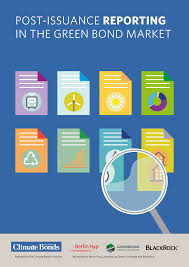Finance
Post-Issuance Reporting Metrics investors should demand annually.

The credibility of the sustainable finance market no longer rests solely on the promises made at issuance but on the quality of post-issuance reporting. Investors increasingly demand transparent, timely, and decision-useful disclosures that demonstrate whether a green, social, or sustainability-linked bond is delivering on its commitments. At a minimum, issuers are expected to publish annual allocation reports, showing exactly how proceeds have been deployed, whether all funds have been allocated, and how unallocated proceeds are managed in the interim. Beyond allocation, investors want to see impact reporting, which links financed projects to measurable outcomes—such as megawatts of renewable energy installed, tons of CO₂e avoided, households connected to clean water, or jobs created in underserved regions. Without these metrics, the risk of greenwashing claims increases, undermining both issuer credibility and market trust.
For sustainability-linked bonds (SLBs), the focus shifts to performance against predefined KPIs and sustainability performance targets (SPTs). Investors expect issuers to disclose annually whether targets—such as emission reductions, renewable energy uptake, or diversity metrics—are on track, and to provide transparent methodologies for calculating progress. When targets are missed, disclosure should also confirm whether the agreed step-up in coupon or other financial penalties have been triggered. This level of transparency ensures that investors can verify whether the financial incentives are genuinely linked to sustainability outcomes, rather than left to interpretation.
High-quality post-issuance reporting goes further than raw numbers—it includes methodological clarity. Investors increasingly want issuers to explain baselines, assumptions, calculation methods, and data sources, ideally aligned with recognized standards like ICMA’s Harmonized Frameworks or the EU Green Bond Standard. They also value third-party verification or assurance of reported data, which can help distinguish credible issuers from those providing boilerplate disclosures. Some advanced issuers integrate their green bond reporting into their sustainability or annual reports, providing a holistic picture of both financial and non-financial performance.
Ultimately, post-issuance reporting is not just a compliance exercise—it is the proof point that the sustainable finance market is more than marketing. For investors, robust reporting provides the evidence needed to measure impact, benchmark issuers, and justify inclusion in ESG-focused portfolios. For issuers, it strengthens credibility, builds long-term investor relationships, and can lower the cost of capital for future deals. The message is clear: annual, consistent, and transparent reporting of both allocation and impact metrics is no longer optional—it is the backbone of trust in the sustainable debt market.

At least 20 people killed in Russian glide bomb attack on village in eastern Ukraine

Transition vs. Physical Risk A decision tree for which risk dominates by industry.

Getting Assurance-Ready — Controls and evidence trails for sustainability data.
trending posts

TOP Categories
Google Web Reporters












3 comments
David Bowie
3 hours agoEmily Johnson Cee
2 dayes agoLuis Diaz
September 25, 2025